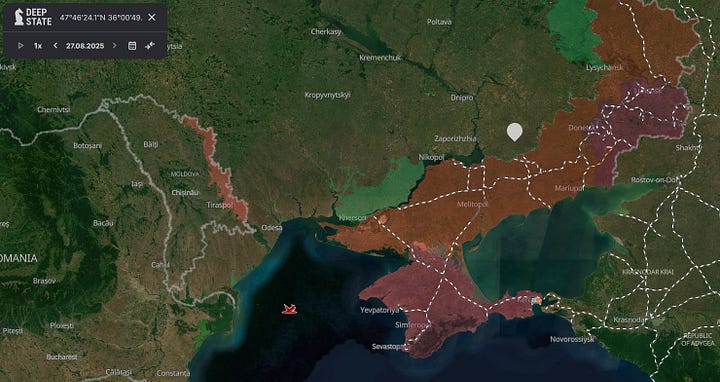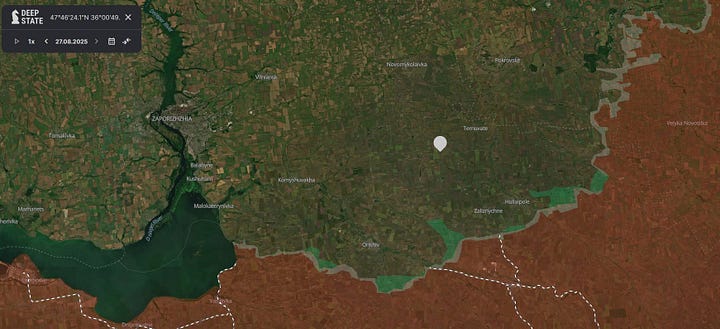Russia Targets Ukrainian Neptune Cruise Missile Launcher Located Close To The Frontline
🇷🇺 🇺🇦
Note: The following text was originally posted on my X/Twitter account.
This apparent Ukrainian Neptune cruise missile launcher was severely damaged/likely destroyed by what is reported to have been a Russian Iskander ballistic missile. According to Russian commentary and a geolocation by X/Twitter user @99Dominik_, the Neptune launcher appears to have been targeted in Zaporizhzhia province at a location that is some 26 kilometers from the frontline. If the targeted launch vehicle was used to launch the baseline anti-ship version of the Ukrainian R-360 Neptune cruise missile, the intended naval target(s) likely to have been located in the Sea of Azov. Alternatively, the targeted launch Neptune vehicle may have been used to launch the terrestrial targets with the land-attack version/derivative of the Neptune.


While the video amounts to another documented successful case of Russian "dynamic targeting," it is important to consider several points:
The video recorded by a Russian ISR drone clearly shows that the launch vehicle successfully launched one Neptune missile prior to the arrival and detonation of the reported Iskander ballistic missile. In other words, the Russian "dynamic targeting" attempt was simply not fast/responsive enough, even though the geolocation indicates that the targeted launch vehicle was located some ~26 kilometers from the frontlines.
Supposing that the video shows the employment of an Iskander ballistic missile against the targeted Neptune launcher, this latest incident suggests that other, more suitable munitions—such as the 300 mm guided artillery rockets/missiles associated with the Tornado-S—remain unavailable in the required numbers. It is otherwise very difficult to justify the expenditure of an Iskander ballistic missile against such a proximate target, notwithstanding the high-value nature of a Neptune launch vehicle.
The reported Iskander ballistic missile did not directly impact the target but detonated upon impact several tens of meters away, a dynamic that evidently caught the remote human operator of the Russian ISR drone monitoring the incident off guard.
The video indicates that the reported Iskander ballistic was equipped with a unitary high explosive warhead that was fitted with an impact/contact fuse. Uncertainties notwithstanding, it is possible, even likely, that the reported Iskander ballistic missile used in this "dynamic targeting" event was likely loaded onto a launch vehicle that was ready to launch on very short notice. A munition equipped with a unitary warhead+airburst fuse mode or, alternatively, a submunition dispensing warhead would have been more suitable for this engagement. While Russia continues to have a large number of munitions at its disposal, there tends to be an enduring mismatch between warhead and/or fusing mode and the role to which a Russian munition is applied.

